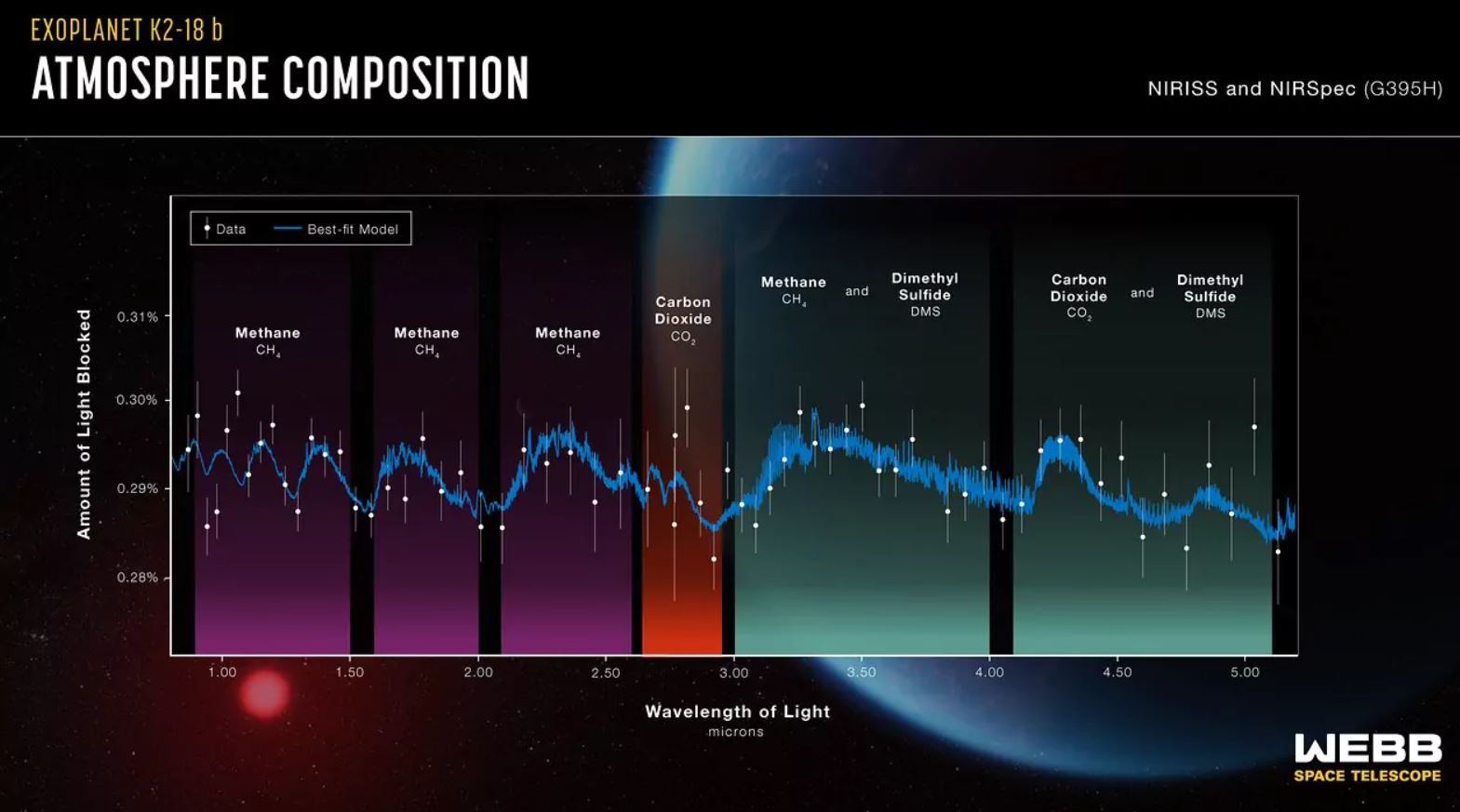
James Webb discovers carbon dioxide in the atmosphere of K2-18b exoplanet
The James Webb Space Telescope has detected carbon-containing molecules, including methane and carbon dioxide, in the atmosphere of exoplanet K2-18b. The finding complements recent research suggesting that K2-18b may be a Hessian exoplanet that may have a hydrogen-rich atmosphere and oceans on its surface. This, in turn, could indicate the presence of Hycean planets, hot cosmic bodies with oceans on their surface.
K2-18b, 8.6 times the size of Earth and 120 light-years away, is located in the constellation Leo and orbits the cool dwarf planet K2-18. Exoplanets like K2-18b, which range in size between Earth and Neptune, have no equivalents and are poorly studied, and the nature of their atmospheres has been hotly debated among astronomers. They believe these worlds provide a promising environment for searching for evidence of life on exoplanets.
"Traditionally, the search for life on exoplanets has focused mainly on small, rocky planets, but the larger Hycean planets are significantly more suitable for atmospheric observations," said astronomer Nikku Madhusudhan of the University of Cambridge.
The abundance of methane and carbon dioxide and the absence of ammonia support the hypothesis that K2-18b may have a watery ocean beneath its hydrogen-rich atmosphere. The telescope also discovered a molecule called dimethyl sulfide, which is produced only by living organisms on Earth, including phytoplankton.
"Upcoming observations by James Webb should confirm whether dimethyl sulfide is indeed present in significant amounts in the atmosphere of K2-18 b," Madhusudhan explained.

Although K2-18b is in the habitable zone and is now known to have carbon-containing molecules, this still does not mean that the planet could be conducive to life. The planet's large size (2.6 times the radius of Earth) means it probably has a large layer of high-pressure ice inside, like Neptune, but a thinner layer on the surface with a hydrogen-rich atmosphere and ocean.
"Although this type of planet does not exist in our solar system, small Neptunes are the most common type of planet currently known in the galaxy," explained team member Subhajit Sarkar from Cardiff University.
Studying such planets is made difficult by the light from their much larger parent stars. The team of astronomers solved this problem by analyzing the light from K2-18b's parent star as it passed through the exoplanet's atmosphere.
"This result was only possible because of Webb's long wavelength range and unprecedented sensitivity, which allowed spectral features to be reliably detected in just two passes," said Madhusudhan.
- Related News
- Wheel of Death: new method will help astronauts stay fit in low gravity
- Due to anomalies of Orion spacecraft, lunar exploration program may be delayed for years։ NASA
- TAO Observatory: World's highest telescope to study evolution of galaxies and exoplanets
- Powerful M9.5 solar flare causes radio blackout in Pacific Ocean
- What will happen to the Earth if the Moon disappears?
- Key to conquering the Red Planet: Why is NASA studying solar storms on Mars?
- Most read
month
week
day
- Digital Julfa Network is launching a pan-Armenian centre in the metaverse, on the Fastexverse virtual platform 993
- Xiaomi unveils exclusive Redmi Note 13 Pro+ dedicated to Messi and Argentina national team 874
- Sparkles: Boston Dynamics unveils a furry robot dog that can dance (video) 833
- Is there a ninth planet in the solar system? Scientists find new evidence 702
- What will happen to the Earth if the Moon disappears? 691
- Smartphone catches fire in child's hand in Russia 676
- Internet 500 times faster than 5G tested in Japan: It allows to transfer five movies in HD resolution in one second 672
- iPhone 16 may get colored matte glass back panel, 7 colors 671
- How to understand how protected a smartphone is from water and dust? 669
- World's largest 3D printer was created in USL It prints 29 meter-long structures 656
- Archive
